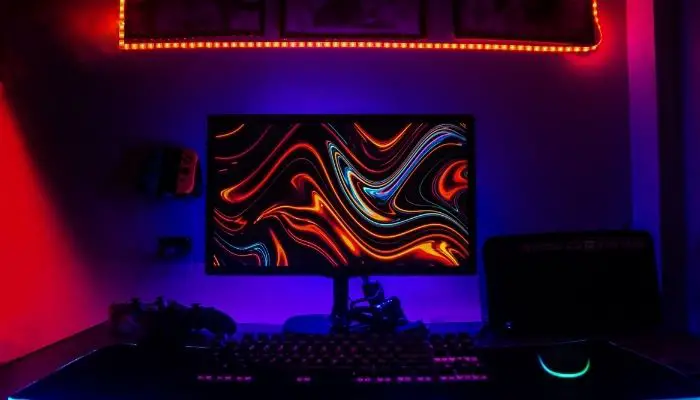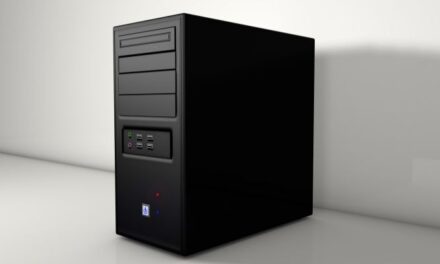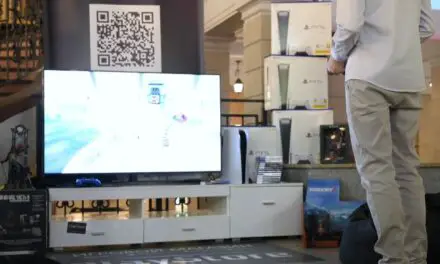If you like to game but also have regular photo editing to get done, then finding a monitor that’s good at both will save you time, space and money.
There’re some good options available but you need to watch out for a few key features if you want a monitor that will be good for both playing games and editing photos.
Table of Contents
Are Gaming Monitors Good For Photo Editing?
Yes, gaming monitors that are large, color-accurate, and high resolution are good for photo editing.
However, because color accuracy and resolutions beyond 1080p are not essential for gaming, you may have to shop around a bit to find a gaming monitor that will be a good fit for both gaming and photo editing.
Here are some key features to look out for.
What To Look For In A Gaming Monitor That Is Also Good For Photo Editing

In a gaming monitor that will also be good for editing photos, you should look for a large, high-resolution display with good viewing angles, good color coverage and accuracy, good calibration options, good black depth, good contrast, and plenty of brightness.
High Resolution
The resolution of a monitor refers to the number of pixels it can display and it’s those pixels packed together that make up the images you’ll be editing.
If you take two monitors that are the same size but with different resolutions, the one with a higher resolution (more pixels) will be able to display a more detailed and sharper image that will look more true-to-life and be easier to edit.
The higher the resolution the better, but if budget is a real concern, go for a display with an absolute minimum of a 1080p resolution.
A 2K screen is a good middle ground with 4K or higher being ideal.
A Large Size
A larger monitor will have the space to display more detailed images.
It will also provide more screen real estate to open additional windows to compare large images, search folders, browse the web, follow alongside by side with a YouTube tutorial video, or display additional toolbars while using programs like Adobe Photoshop and Illustrator.
Try and go for at least a 27-inch monitor, but be aware that the larger the monitor you opt for the higher the resolution it will need to maintain image quality.
27 inches at a 1440p resolution (2,560 X 1,440 pixels) is a good middle ground.
If you are considering a gaming monitor 32 inches or beyond, it will likely need to be 4K resolution (3,840 X 2,160 pixels) to maintain the finer detail you would need to edit photos precisely.
Also Read: Can A Laptop Charge A Phone? (Answered)
A Wide Viewing Angle
The viewing angle of your monitor shouldn’t be too much of an issue as long as you’re not moving around your desk a lot and viewing your monitor from outside of its stated viewing angle.
Moving off to the side and viewing an image from outside of your display’s viewing angle will cause the image to lose contrast and look degraded, making it difficult to edit accurately.
The wider your monitor’s viewing angle, the less an image will degrade as your line of view moves away from the center of the display.
IPS panels are considered among the best for wide viewing angles.
Most IPS panels offer a 178º viewing angle which reduces shifts in colors or contrast from wider angles.
A Wide Color Gamut
A wide color gamut is important for photo editing because it will display a wider range of colors than a standard one and this will present more vibrant colors and more true-to-life photos.
When it comes to color gamuts, there are two main ones that you will find in monitors, sRGB and Adobe RGB.
They both include an equal amount of colors, but sRGB’s range is narrower.
Adobe RGB is said to contain a 35% wider gamut of color than sRGB, however, sRGB is the most used color space and is said to give better, more consistent, and brighter colors.
sRGB is considered to be the most compatible color space for the web and digital displays, and Adobe RGB is said to be the most accurate for print design.
If your photos are mostly for social media and online use, a gaming monitor with at least 99% sRGB coverage should be good enough to create color accurate photos for the web.
If you are going to be regularly printing out your photos Adobe RGB, a gaming monitor with at least 90% Adobe RGB coverage.
It’s less common to find wide Adobe RGB coverage in gaming monitors, but one monitor that is good for gaming and covers 100-percent Adobe RGB is the Dell Ultrasharp, 27-inch, 4K Monitor.
Good Calibration Options
Calibrating your monitor before editing photos is especially important if you want your edits to be accurate.
For tasks like photo editing, you want to be absolutely sure that the colors you are viewing on your screen are as close as possible to real life.
Whichever monitor you choose, ensure it offers decent options for calibration.
On many midrange and high-end displays, there will be a service menu for color calibration.
On cheaper gaming monitors you can use a calibration tool, such as Datacolor SpyderX Pro.
Good Contrast
Gaming monitors with a higher contrast ratio can normally display a larger range of colors, which results in more realistic picture quality.
To find a gaming monitor with good contrast you’ll probably have to steer clear of IPS panels – which is unfortunate considering IPS displays tick so many other boxes when it comes to editing.
Good Black Depth
Aim to pick up a monitor with as deep blacks as possible.
OLED displays usually have the deepest blacks but they are also high-end and come with high-end price tags.
Some IPS displays have deeper blacks than others so it’s worth shopping around and checking out detailed reviews of any monitor you’re considering buying.
Once you don’t need to produce the most accurate work in the world, a good 1440p gaming monitor with an IPS panel would be a good place to start.
One example of a good, reasonably priced monitor that would suit both is the LG Ultragear.
It has a 27-inch QHD (2560 x 1440) HDR 10, IPS display with sRGB 99% color coverage.
A gaming monitor (like the one mentioned above) with an IPS display and at least 99% sRGB coverage should be more than good enough for the vast majority of your photo editing needs unless you are going to be doing regular professional print work.



